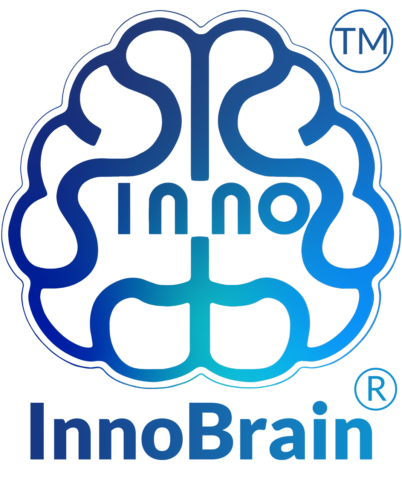What is Mental Workload?
Mental workload, or cognitive workload, refers to the mental effort required to perform tasks. It involves the use of mental resources to manage task demands and is influenced by factors such as task complexity, time constraints, and environmental conditions. It is a crucial cognitive process that plays a significant role in learning process and performance. Excessive mental demands can lead to cognitive overload, impairing focus, decision-making, and the ability to react effectively to potential hazards. Conversely, insufficient mental workload may result in reduced attention, which can be similarly detrimental. Therefore, both excessively high workloads (i.e., overload) and excessively low workloads (i.e., underload) have been linked to decreased performance.
Mental Workload Prior Studies
There is extensive research in the neuroscience literature on measuring mental workload through neuronal brain activity, specifically EEG signals. One of the foundational works on cognitive performance and mental workload is [1], which has served as the basis for numerous subsequent studies. This research suggests that good cognitive performance is associated with a phasic (event-related) decrease in alpha activity and an increase in theta activity. [2] similarly found that the theta rhythm, particularly over the prefrontal cortex, increases as mental workload rises, while alpha rhythm shows an inverse relationship with mental workload, especially over the parietal cortex. [3] introduced the concept of a workload neurometric, defined as the ratio between frontal theta activity and parietal alpha activity. Therefore, these findings indicate that the balance between frontal theta and parietal alpha activity can serve as a reliable neurometric for assessing mental workload, providing a robust framework for evaluating cognitive performance in various contexts. However, using these findings in real-world uncontrolled scenarios has not been validated thoroughly.
Application and Importance
Mental workload plays an important role in the learning process, impacts mental fatigue, and influences decision-making abilities. Monitoring mental workload over time can be highly beneficial in various applications. It enables the identification of periods of high or low mental workload during task performance, providing insight into task difficulty for the individual. This information can be used to assess the learning process. If the task is too easy, a consistently low mental workload is expected. Conversely, when someone is struggling with learning, the mental workload is expected to be high. As they improve, the mental workload should gradually decrease, indicating effective learning. However, if the task remains overly challenging, the mental workload may stay elevated for an extended period, potentially leading to mental fatigue. Monitoring mental workload can also be applied in the design of various products. For instance, in game design, understanding when players experience a high mental workload can help developers adjust the game’s complexity to optimize the player experience. This insight enables the design of games that maintain an engaging level of challenge, avoiding both excessive difficulty and monotony.
InnoBrain’s Mental Workload Model
InnoBrain neuroscientists have developed a specialized mental workload protocol and collected a comprehensive EEG dataset to create an in-house mental workload model using EEG data. Our data scientists preprocess the data using the InnoBrain cleaning procedure (see our blog post on the InnoBrain cleaning algorithm), followed by training a machine learning model to classify mental workload. We employed Leave-One-Subject-Out Cross Validation to assess the accuracy of our subject-independent model, resulting in an average accuracy of 75.4% for our binary classifier (distinguishing between high and low mental workload), with a standard deviation of 10.8%. Below is the normalized confusion matrix of our model, indicating an 80% precision and 68% recall, which can be adjusted by modifying the sensitivity threshold according to specific application requirements.

Validation in Uncontrolled Environment
Today, driving simulators are extensively used in driving schools to train drivers before they transition to real-world driving. In one of our collaborations, we designed a scenario to analyze drivers’ cognitive performance and learning process using EEG signals during their interaction with driving simulators. The scenario involves a ~12-minute drive, with the first half comprising a straight and easy route, and the second half containing uneven roads and predefined events that increase the level of difficulty. Below is the list of events, such as “child-crossing,” where a child suddenly crosses the street, requiring the driver to respond appropriately. The exact timing of these events is known, allowing us to use them as triggers to examine workload changes, with a higher mental workload expected for more challenging events. Additionally, we anticipate that the average mental workload will be higher during the second half of the task. At the end of the task, drivers completed a questionnaire to report their experience. We also expect that those who reported higher task difficulty and workload in the questionnaire will have correspondingly higher predicted mental workload. Here is the list of all triggers in chronological order: scenario_start, quarter, firetruck_crossing, giving_chase, narrow_street, man_crossing, man_crossing1, child_crossing, tractor_1, deer_in_headlights, cow_crossing, truck_advancing, goat_standing, boulders, car_advancing, scenario_complete. Among these, “car_advancing” is the most complex event.
To validate our ML model, we compared it to the classic model proposed in the literature which is based on EEG bands and gives a score as a mental workload. However, our model is an ML probabilistic model and assigns the probability of a high mental workload. Therefore, we can not compare the absolute value of these two models but it’s still possible to compare them relatively among subjects and events. The figure below illustrates the mental workload time-series for one of our subjects. For most participants, the ML model indicates a higher average mental workload during the second half of the task, unlike the classic model.

By analyzing a window around each trigger, we can compare different events to determine if more complex events elicit a higher average mental workload. The figure below presents this comparison. The event ordering in the ML model aligns more logically compared to the classic model, as harder events show a higher mental workload, while easier events show a lower workload, consistent with expectations.

Finally, we compared the average mental workload estimated by our model with the subjects’ questionnaire responses. We selected subjects with cleaner EEG signals for this comparison. The figure below illustrates the results for both the classic and ML models. Subjects represented by red bars reported experiencing a high mental workload and perceived the task as difficult, subjects represented by green bars reported the opposite, and gray subjects had an average mental workload. As shown, the ML model more accurately predicts a higher mental workload for subjects with red bars and a lower workload for those with green bars, which aligns with their self-reports.

[1] Klimesch, Wolfgang. “EEG alpha and theta oscillations reflect cognitive and memory performance: a review and analysis.” Brain research reviews 29.2-3 (1999): 169-195.
[2] Gevins, Alan, et al. “High-resolution EEG mapping of cortical activation related to working memory: effects of task difficulty, type of processing, and practice.” Cerebral cortex (New York, NY: 1991) 7.4 (1997): 374-385.
[3] Borghini, Gianluca, et al. “Frontal EEG theta changes assess the training improvements of novices in flight simulation tasks.” 2013 35th Annual International Conference of the IEEE Engineering in Medicine and Biology Society (EMBC). IEEE, 2013.

